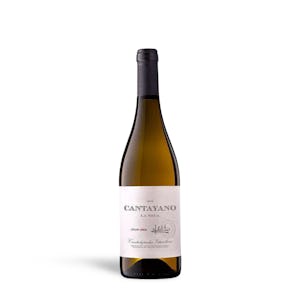
Savoy Cabbage from France
Extra quality, air flown
Tasting Notes from the Curator
Savoy cabbage, known by its scientific name Brassica oleracea var. sabauda, stands out within the cabbage family for its sublime combination of mild, sweet, and earthy flavors. Its crinkly, ruffled leaves are not just visually appealing but contribute to its pleasant mouthfeel. The aroma is an intriguing blend of subtle earthiness, vegetal freshness, and sweet undertones, making it less pungent than its green and red counterparts. When consumed raw, the cabbage offers a crisp and clean vegetal taste that enlivens any salad or slaw. When cooked, the mild sweetness becomes more pronounced, adding a pleasant dimension to robust dishes. The texture is tender yet crisp, with a slight elasticity that holds up well whether roasted, sautéed, or stir-fried, ensuring the leaves maintain their structure. Savoy cabbage’s unique attributes make it a versatile and sophisticated ingredient suitable for both traditional and contemporary culinary applications.
Pairings & Suggestions
Savoy cabbage’s versatility shines through in a variety of culinary applications, both raw and cooked.
Raw Applications:
Salad with thinly sliced leaves paired with apples, avocados, walnuts, and a light vinaigrette. Classic slaw shredded finely with carrots, onions, and a tangy dressing of vinegar, mustard, and honey.
Cooked Applications:
In soups and stews, chopped into bite-sized pieces, added in the last 20-30 minutes alongside potatoes, carrots, and onions. Braised in broth with garlic, onions, and herbs like thyme or sage, served as a side to roasted meats. Roasted after being tossed with olive oil, salt, and pepper, forming a caramelized shell. Sautéed in oil or butter with bacon, onions, and a splash of vinegar, making a delightful side.
Stuffed Applications:
Blanched leaves used for hearty stuffed cabbage rolls with ground meat and rice, simmered in tomato-based sauces. Large leaves also make excellent wraps for grilled chicken or veggie fillings, serving as a light appetizer.
Pickled Applications:
Sauerkraut prepared by shredding and fermenting with salt, ideal as a tangy condiment. Quick pickled cabbage pairs well with sandwiches or as a side dish.
Protein Pairings:
Pork, duck, and mild fish or seafood harmonize well with Savoy cabbage’s earthy and sweet profile. Consider sautéed cabbage with seared duck breast or braised pork loin.
Vegetarian Pairings:
Roasted root vegetables like carrots or potatoes, and fresh herbs such as dill, mint, and thyme add depth to cabbage preparations.
A Culinary Traveler from the Alps
The journey of Savoy cabbage from the rugged terrains of the Western Alps to international kitchens is as rich as its flavor profile. Originating from the historical Savoy region, which beautifully borders France, Italy, and Switzerland, this crinkly-leafed wonder owes its name to the influential House of Savoy. Cultivated since the 16th century and later introduced to northern Europe, Savoy cabbage quickly became a staple due to its versatility and unique texture. The Savoy region’s varied microclimates—ranging from alpine cold winters to mild summers—create the perfect conditions for growing hardy vegetables like this cabbage. The House of Savoy played a crucial role not just in politics and trade but also in culinary traditions, enabling this humble vegetable to travel far and wide. Whether embraced in traditional Italian verza stufata or the French sou-fassum, Savoy cabbage has earned its place on the gourmet stage. Its introduction to the Americas by European settlers enriched various culinary landscapes, making it a beloved ingredient in both classic and modern cuisine.
Storage Instructions
Store whole Savoy cabbage unwrapped in the crisper drawer of your refrigerator where it can last up to two weeks. For cut cabbage, wrap tightly in plastic or place in an airtight container and store in the crisper drawer for up to 2-3 days. Wash only just before use to maintain its crispness and flavor.





